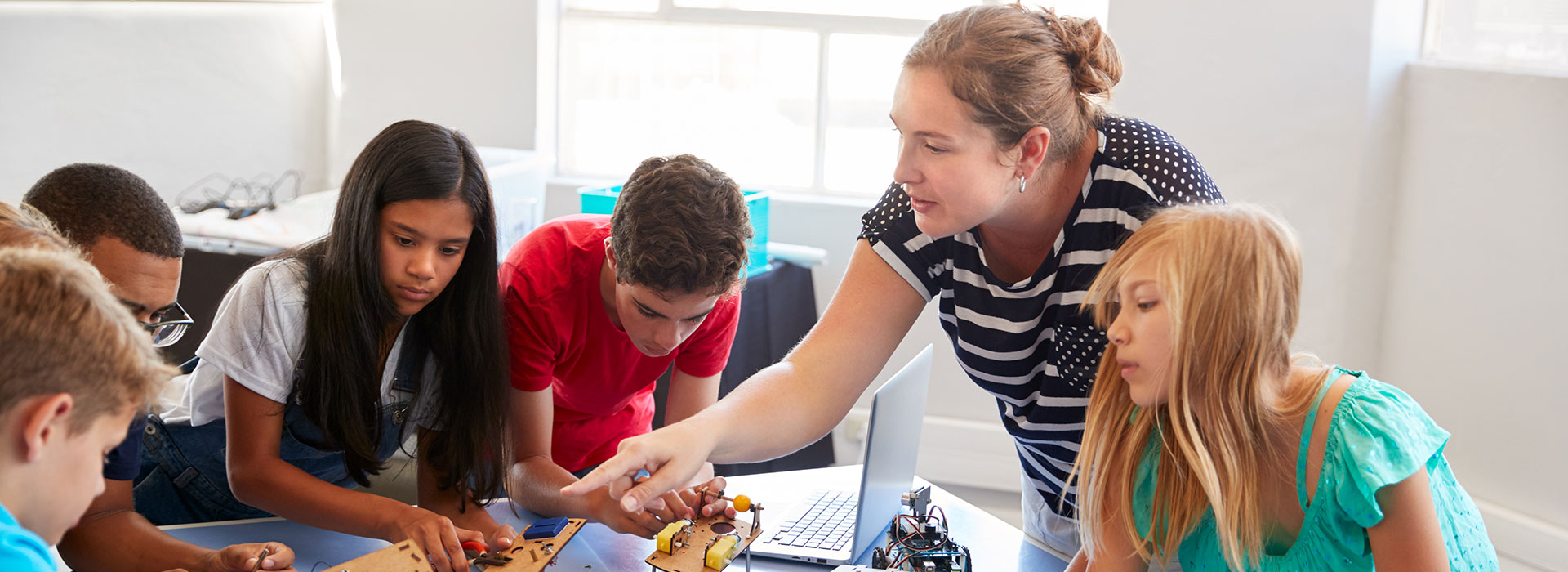Accelerate, Don’t Remediate with Multi-Tiered Systems of Support (MTSS)
Imagine a school where students set, monitor, and achieve their academic, social, and emotional goals by partnering with teachers. Students in this school develop academic, social, and emotional capacities, so they make positive, responsible decisions. They create frameworks to achieve their goals and they build positive relationships with others.
When a learning community believes that together they are capable of developing their students’ academic, social, and emotional capacity… it actually happens. Collective teacher efficacy (CTE) refers to a learning community’s shared belief that through its actions, it can positively IMPACT holistic student outcomes (Eells, 2011).
“With an effect size of 1.39, CTE is ranked as the number one factor influencing student achievement (Hattie, 2016). Collective teacher efficacy, as an influence on student achievement, is a contribution that comes from the school – not the home or the students themselves. According to the Visible Learning Research, CTE is three times more powerful and predictive of student learning than socio-economic status. It is more than double the effect of prior achievement and CTE is also greater than three times more likely to influence student achievement than student motivation and concentration, persistence, and engagement.” (Donohoo, 2017).
CTE is crucial when advancing quality implementation of Multi-Tiered Systems of Support (MTSS). The Impact Teams MTSS Framework is a systemic, continuous improvement framework in which evidence-based problem solving and decision-making is practiced across all levels of the educational system. The goal of MTSS is to provide proactive, targeted support to accelerate the academic, social, and emotional capacity of all students. Educators engage in continuous Impact Team (PLC) improvement cycles through evidence-based classroom and team collaborative inquiry grounded in the Evidence-Analysis-Action protocol that supports multiple tiers of teaching and learning.
What are Impact Teams?
Impact Teams are teams of educators who partner with students. They innovate to expand student ownership and agency through evidence-based collaborative inquiry. Teams develop “aspiring” learners who can direct their hopes and dreams to action so they can achieve any ambitious goal they set their minds to (Bloomberg & Pitchford, 2017 & Rose, 2021).
Impact Teams lead with moral purpose by committing to making a positive difference in the lives and outcomes of learners. Barber and Fullan (2005) posit that: “The central moral purpose (of any learning organization) consists of constantly improving student achievement by ensuring that opportunity gaps, wherever they exist, are eliminated and/or narrowed.” For a school to make its moral purpose visible, there needs to be a shared commitment to cultivating a culture of belonging and efficacy.
Know Thy Impact: Eliminating Opportunity Gaps
Impact Teams create quality learning partnerships with educators, students, and families to co-construct multi-tiered systems of support for learners who need academic, social, and/or emotional support. Early holistic assessment, combined with targeted, evidence-based instruction and coaching creates a coherent pathway for learning acceleration and student self-efficacy.
Instead of the “waiting for failure” mentality and the traditional “deficit thinking” interventions that plague our schools nationally, the Impact Teams MTSS Framework takes a proactive, learner-centered, strengths-based approach that puts laser-like focus on closing opportunity gaps.
Strengthening Tiered Systems of Support with Collaborative Inquiry
Impact Teams Collaborative Inquiry Cycles, integrated with core MTSS principles, promote continuous improvement processes at all levels of the system (district, school site, and grade/course levels). Impact Team Inquiry supports collaborative restructuring efforts designed to align multiple systems of support, reduce initiative fatigue by aligning school improvement goals, and enhance triangulation of data to support “whole child” teaching. Impact Teams design collective actions that accelerate learning using the VL influences that get the highest impact.
The Impact Teams MTSS Framework supports systemic change through intentional human-centered design. The framework guides teams in developing solutions for obstacles and challenges by involving the human perspective in all steps of the problem-solving process. Impact Teams integrate five MTSS core components (see table below) to create an integrated, comprehensive framework that focuses on quality implementation of:
- Balanced assessment framework
- High impact, differentiated, tiered instruction aligned to the UDL framework
- Culturally responsive supports and resources
- Restorative support and relational literacy, necessary for academic, social, and emotional success.
- Community based support
The following components are core building blocks of MTSS frameworks nationally. Impact Teams expand these components to advance learner efficacy systemwide.
Building Block One
Utilize a Balanced Assessment Framework
District and site Impact Teams collaborate to create a “balanced assessment framework” that includes state tests, universal screening, diagnostic assessment, formative assessment, progress monitoring, and teacher observations to inform collective actions about tiered support placement, as well as data collection methods such as family and student voice surveys for continuous systemic improvement.
Building Block Two
Ensure Quality UDL High-Impact Instruction
All students receive high quality, standards-based, culturally and linguistically relevant instruction in their general education classroom settings from teams of educators who intentionally strengthen learner efficacy by:
- nurturing quality student-parent partnerships by strengthening relational trust
- implementing differentiated instruction aligned to the Universal Design for Learning framework,
- designing and delivering an equitable, viable, and coherent curriculum
- implementing core formative practices that accelerate learning grounded in state learning progressions to strengthen learner ownership and agency
Building Block Three
Expand Culturally Responsive Supports and Resources
Culturally responsive teaching is an educational strategy that embraces students’ identities. It is a way of seeing diversity as a source of knowledge. When teaching is culturally responsible, students use their own identities to learn and grow. Students learn using aspects of their race, social class, gender, language, sexual orientation, nationality, religion, or ability. These practices strengthen engagement and increase graduation rates.
Building Block Four
Ensure Restorative Supports and Relational Literacy
School communities should consider co-constructing a systemic restorative framework by creating and sustaining a culture that is rooted in self, healing, and relational literacy. It is vital that this comprehensive support creates an integrated approach between cultural competency, trauma-informed care, and restorative-resiliency practices.
Building Block Five
Cultivate Community Based Support
When school communities provide: opportunities for the expansion of learning opportunities, active family-community engagement, integrated student-supports, and collaborative leadership, all students benefit. Based on the analysis of over 100 studies, by the Learning Policy Institute and National Education Policy Center, (2017), the evidence is clear on the positive effect of these practices on student academic outcomes:
- Opportunities for expansion of learning: Before/after school, summer time, intersessions, weekends providing for targeted academic instruction and individualized support
- Active family-community engagement: Family and community partnering with educators with a focus on whole child support. Families as partners in the decision-making for meeting the discrete academic and socioemotional needs of their children.
- Integrated student-supports: The school is the hub with dedicated staff to connect families to medical, dental, mental health, and other social services in order to ensure the basic needs of the family are met so energy can be directed to the well-being of the student.
- Collaborative leadership: With an intention of continuous professional learning and based on a culture of relational trust, educational staff partner with families and community members to co-construct actions and services to meet the discrete needs of every learner.
If your system is beginning its MTSS journey or if you are in the process of strengthening MTSS, use these questions to guide your thinking:
- How does your system create intentional conditions to build a culture of efficacy?
- Are students being taught how to take ownership of their learning?
- Are students learning to set and monitor ambitious goals to continuously improve?
- Does your current system create quality student and family partnerships to ensure you have consensus on priority goals?
- How are your PLCs leveraging the core components of MTSS to cultivate “aspiring” learners?
- Does your system have processes and quality evidence to ensure that the systems of support are grounded in quality evidence?
- Does your system have a case management system to ensure the basic needs of all families are met?



